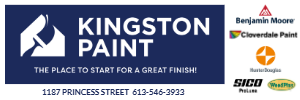



















Old Masters Penetrating Stain
(colours are approximate and should be tested on a piece of the wood you are using)
This is a traditional oil-based wood stain. This product penetrates the wood’s surface to create vibrant colors that enhance the natural beauty of wood.
Penetrating Stain is recommended for use on unfinished, interior wood surfaces or surfaces in which the previous finish has been removed. It is especially recommended for staining unfinished hardwoods, such as oak, ash, walnut, and mahogany.
Where to Use
Penetrating Stain is recommended for use on unfinished, interior wood surfaces or surfaces in which the previous finish has been removed. Especially recommended for staining unfinished hardwoods such as, oak, ash, walnut, and mahogany.
Ideal for cabinets, woodwork, paneling, trim, doors, furniture, floors, and more.
Surface Preparation
The wood surface must be clean, dry, and free from dirt, wax, or grease. Sand the wood thoroughly, first with medium grit sandpaper, then progressing to a fine grit paper. Always sand in the direction of the wood grain. Sand smooth, then remove dust particles with a lint-free rag or a tack rag.
Application
For projects requiring more than one container of the same color, stir well and intermix both containers to avoid color variance.
Application on Bare Wood: Stir well before and during application for even distribution of color. Apply an even coat of Penetrating Stain with a brush, cloth, pad, roller or sprayer. Allow the stain to penetrate the surface for 2 to 5 minutes. Before the stain dries, wipe off excess stain with a soft cloth, first across the grain, then with the grain.
Application on Previously Finished Surfaces: If staining previously finished surfaces, first restore the surface to bare wood by completely removing the old finish, then follow the surface preparation directions listed above. When the bare wood surface is revealed, stir well and begin application. Apply an even coat of Penetrating Stain with a brush, cloth, pad, roller or sprayer. Allow the stain to penetrate the surface for 2 to 5 minutes. Before the stain dries, wipe off excess stain with a soft cloth,first across the grain, then with the grain.
HELPFUL HINTS
Color depth may vary according to wood type and application method used. Before staining, test stain in an inconspicuous area. For a deeper color, allow the surface to dry, then apply a second coat. For a lighter color, before the stain has dried, wipe the surface with a cloth dampened with mineral spirits.
Mixing and Tinting
Custom colors can be achieved by intermixing Penetrating Stain colors or by adding up to 10 ounces of universal or industrial colorant per gallon. Also, colorant may be added to Penetrating Stain Natural Tint Base to create custom colors. Natural Tint Base Penetrating Stain may be used to lighten stain color in any proportion or as a tint base to which colorant may be added for ultimate color selection. Create Santa Fe pastel colors by tinting Pickling White Penetrating Stain with universal colorant (formulas available upon request). The amount of colorant added may affect its performance and extend the drying-time. DO NOT THIN.
Coverage:
Approximately 500 square feet per gallon. Spreading rate will vary significantly depending on the porosity and texture of the wood.
Drying Time
Approximately 4 hours, depending on humidity, temperature, and air movement. Drying times may also be extended due to excess stain application or lack of stain penetration. Be sure surface is thoroughly dry before top coating. (Note to professionals—allow 2 to 4 hours drying time at normal room temperature before applying lacquer.) When used on hardwood floors, allow 24 hours or longer depending on surface and drying conditions. Ideal drying conditions recommended are 70° to 75°F and 35 to 50% humidity.
Cleanup
Using a cleaning solvent, such as paint thinner or mineral spirits, is recommended for cleanup. The use of paint thinners or mineral spirits may violate VOC compliancy in your area. Check with your local government agencies to ensure proper compliancy.
| DANGER: Rags, steel wool, sanding residue, and other wastes used or soaked with this product may spontaneously catch fire if improperly discarded. No ignition source is required for these wastes to start on fire by themselves. Immediately place rags, steel wool, sanding residue, and other wastes used or soaked with this product in a sealed, water-filled metal container. Dispose of in accordance with local fire regulations. |
Recommended Finish Coat: We recommend Old Masters clear finishes. However, this stain can be top coated with most clears. If a lacquer topcoat is desired, we suggest testing for compatibility before using.
